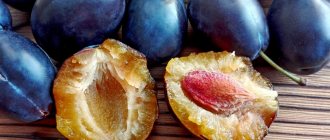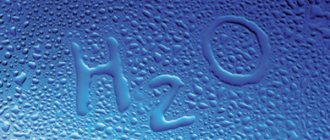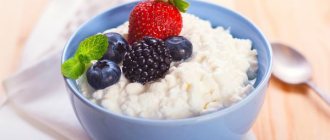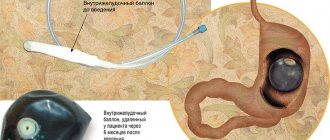What is sucralose?
Sucralose is a food additive E 955 used as an artificial sweetener . It was invented in 1976 by scientists from the English company Tate & Lyle, namely Leslie Hough and Shashikant Phandis. Hough then told Pandis to “test” the chlorinated sucrose derivative , which he recognized by taste. He discovered that the compound had a strong sweet taste. Tate and Lyle patented sucralose that same year. [14]
Sucralose is a non-nutritive sweetener used in a variety of foods and beverages. It is produced by a process that begins just like the production of regular table sugar (sucrose). However, sucralose is not a sugar. It differs from it in its chemical composition. Three selected groups in the sucrose molecule are replaced with three chlorine atoms, resulting in a no-calorie sugar-like sweetener. [1][4][14]
Although sucralose is very sweet, its chemical compound prevents stomach acids from breaking it down. Up to 85% of a teaspoon of sucralose is not absorbed into the body . However, 15% is absorbed by the body in the short term through urine. For this reason, it is clear that sucralose contains no calories and does not bind to muscle or fat. [1][4][14]
Artificial sweeteners: harm or benefit?
Authors: Olga Kosnikova, food chemist-technologist
Editor: Maxim Ivannikov, scientific editor of SMT
Sweeteners are a complex product. On the one hand, it is obviously “useful” (helps reduce calories in the diet, consume sweet foods for diabetics), on the other hand, it is openly demonized by the media. And if natural sweeteners, for example, stevia, are still associated with proper nutrition, then when it comes to chemically synthesized ones, people run away like fire.
The most “demonic” one, aspartame, has already been analyzed by food chemist-technologist Olga Kosnikova especially for our site. Today she will talk about other “scary words”: cyclamate, acesulfame and saccharin. All of them are non-caloric and approved for diabetic nutrition [1].⠀
Briefly about why they are needed. People, are you serious? Humanity has discovered molecules that make food sweet. And at the same time you don’t overeat sugar! Yes, this is brilliant. And safe.
Sodium cyclamate and potassium cyclamate (E952)
The first will be E952. This is cyclamic acid and its children - sodium and potassium salts. The one you most often see is sodium cyclamate. Cyclamate is 30-50 times sweeter than sugar. Just think about these numbers. If you mix it with saccharin, you get a mixture in which the unpleasant (atypical) taste of both sweeteners is neutralized.
This is the biggest problem with sweeteners. They don't taste much like sugar and often have an unusual aftertaste that can be off-putting. Cyclamate is heat stable, meaning it can be added to baked goods and dishes. It has no calories, i.e. is not absorbed by the body and is simply excreted. And it's also inexpensive. Well, class? Or not?⠀
Cyclamate was discovered, like many other sweeteners, due to non-compliance with safety precautions. Chemists have gone crazy when it comes to sweets! They either taste the reagents, then put a cigarette next to them and are then surprised by the sweet taste on the filter. Cyclamate was discovered: a graduate student at the University of Illinois, Michael Sweda, worked on a cure for fever in 1937. He synthesized various substances in search of the same thing. And thinking, he put the cigarette on the table with the reagents [2]. Just imagine, before you could smoke in a lab!
The substance has been patented. But not for food, but to mask the bitter taste of medicine. And then they figured out that they could make soda for diabetics. A product was created with the self-explanatory name No-Cal [3]. Naturally, the giants Cola and Pepsi did not tolerate this. And very soon they were making non-calorie drinks themselves, enjoying the cyclamate. The beloved Coca-Cola Zero was born just like that.
What about security? Cyclamate is often called a carcinogenic and dangerous sweetener. But let's get to the dry facts. In 1969, cyclamate was banned in the United States. But how is this done? First, bypassing the FDA, the safe status of the substance is removed. We are talking about the GRAS document. Then in 1970, the FDA came up with new guidelines. And it prohibits cyclamate completely. Why? Because experiments on rats showed a risk of bladder cancer [4]. In the case of a potential carcinogen, it is wise to play it safe. However!
No one succeeded in repeating the results of this experiment [5]. The evidence for the carcinogenicity of cyclamate has been repeatedly reviewed. Safety has been proven time after time [6] [7]. In 2000, an experiment was conducted on monkeys. Verdict: it is impossible to connect cyclamate and different types of tumors [8]. Moreover, cyclamate has not been found to have DNA-damaging properties [8]. That is, everything is in favor of lifting the ban. However, the ban has not yet been lifted in the United States. At the same time, cyclamate is permitted in more than 55 countries. And is freely used in food products, especially diabetic ones.
You say: “But if there is even a minimal risk that cyclamate causes cancer, it should be banned.” And I will answer: for any substance you can find a dose that will cause cancer in experimental mice and rats. Make them drink 10 liters of soda. Or breathe a suspension of titanium dioxide. And you will get the desired result.
The carcinogenicity of cyclamate could not be confirmed and the results of that first experiment could not even be repeated.
In general, to be afraid of cyclamate, living in the city, breathing exhaust fumes, going on vacation to countries with a scorching sun and drinking wine on Fridays, is a little funny. Believe me, there are more significant threats in your life. Alcohol is a proven carcinogen. There are a dozen carcinogens in car exhaust. I'm not talking about cigarettes. Are we afraid of Diet Coke, seriously?
Acesulfame potassium (E950)
This sweetener is 180-200 times sweeter than sugar. Non-caloric. Also discovered by accident because the chemist licked his finger. Also in its pure form it gives a bitter aftertaste, so it is found in mixtures with other sweeteners. They also have full synergy there: they enhance each other’s sweetness [9]. Incredibly stable, withstands long-term heating, and is stored for a very long time.
He was also accused of all mortal sins. And yet, there is no evidence of danger. Acesulfame does not affect body weight [10], does not cause cancer [11] and is quietly excreted in the urine. It is significant that acesulfame was used as a marker of urine contamination of swimming pools [12]. Bon appetit if you've eaten.
Saccharin (E954)
Another non-caloric sweetener that was discovered because a chemist licked his fingers (no longer funny!). Saccharin is 300-500 times sweeter than sugar. And as it happens, in its pure form it is not very pleasant to the taste. Truly, when it comes to sweeteners, blends are the best solution.
Saccharin is a scandalous comrade. The history of its discovery is connected with conflicts between two scientists. Read more here [13]. Monsanto was the first to produce saccharin on an industrial scale. At the beginning of the twentieth century, they dealt with saccharin, vanillin and caffeine. Any expert with an iHerb education will tell you that these are scary and dangerous chemicals (No).
In the States, a scandal erupted over saccharin for several decades. There is such an amendment to the federal food law as the Delaney Article. It says, in general, a reasonable thing: a carcinogenic substance cannot be used as a food additive.
But the thing about research is that we can't just take two groups of healthy people and feed one with a nutritional supplement that we have questions about. And the second group should not be given this food supplement. And see in 10-20 years which group has more cases of cancer. This is unrealistic and unethical. Therefore, research is carried out on our smaller brothers. And the results of experiments on animals cannot always be transferred to humans.
In 1969, saccharin was found to cause cancer in rats. Once again the rats suffer for the sake of humanity, and again panic arises. But the catch was that saccharin was the only artificial sweetener allowed in food at that moment. It was a bit tight with regular sugar – world wars, shortages. At first glance, not the most reasonable decision is made: to continue using saccharin in spite of everything. Instead of a ban, the packaging had scary messages like “May cause cancer.” Like with dyes, which supposedly can cause hyperactivity in children.
And only in 2000, after 40 years, it was confirmed: no, saccharin is not carcinogenic. You can exhale. Rats had cancer, of course. But they were given saccharin in quantities comparable to their own weight! [14] It is also assumed that those terrible studies did not make allowances for human physiology [15]. People are not rats after all (for the most part). But the sediment remained.
The fear of artificial sweeteners is caused by banal chemophobia. “If it is synthesized by man and not by nature, then it is definitely harmful.” If acesulfame or cyclamate were natural substances, no one would even think of driving a barrel at them.
A moment of philosophy: after all, if this chemical compound is capable of existing, then nature itself approves of its existence? And she allowed this to be done not by some plant, but by a higher form of life, a human? Try this argument against eco-bio advocates. Let them think about nature's design.
No joke, there is nothing more natural and natural than chemistry. And physics.
Sources:
- https://www.diabetes-ru.org/files/prodavcu-proizvoditelyu/Standarty-kachestvaRDA.pdf
- https://archive.org/details/processedfoodsc00vern/page/332/mode/2up
- https://en.wikipedia.org/wiki/No-Cal#cite_note-encyc-1
- https://books.google.ru/books?id=zTFpyBr4WvgC&pg=PA299&redir_esc=y#v=onepage&q&f=false
- https://pubmed.ncbi.nlm.nih.gov/2420530/
- https://pubmed.ncbi.nlm.nih.gov/14726272/
- https://pubmed.ncbi.nlm.nih.gov/10653518/
- https://pubmed.ncbi.nlm.nih.gov/15367404/
- https://web.archive.org/web/20140811002814/https://nfscfaculty.tamu.edu/talcott/courses/FSTC605/Food%20Product%20Design/Customizing%20Sweetness.pdf
- https://www.ncbi.nlm.nih.gov/pmc/articles/PMC4135487/
- https://ntp.niehs.nih.gov/publications/reports/gmm/gmm02/index.html
- https://www.npr.org/sections/health-shots/2017/03/01/517785902/just-how-much-pee-is-in-that-pool
- https://flavorchemist.livejournal.com/67819.html
- https://www.journals.elsevier.com/annals-of-oncology
- https://www.nytimes.com/2000/05/16/science/us-report-adds-to-list-of-carcinogens.html
Sucrose vs. sucralose
Sucrose is a naturally occurring sugar, commonly known as table sugar, while sucralose is an artificial sweetener. The chemical structures of the two sweeteners are related , but not identical . The molecular formula for sucralose is C12H19Cl3O8 , while the formula for sucrose is C12H22O11 . Thus, unlike sucrose, sucralose is enriched with chlorine . The sucralose molecule looks similar to a sugar molecule. [1][14]
As mentioned earlier, sucralose has zero calories compared to sucrose. It provides 16 calories per teaspoon (about 4.2 g). Sucralose is approximately 600 times sweeter than sucrose and, unlike most artificial sweeteners, does not have a bitter taste . [4]
Facts and myths about sucralose
There have been many articles and studies written about sucralose that focus on its main benefits as well as its negative effects on our health. Which of these statements are true and which are false?
Sucralose and weight loss
Sucralose, like all artificial sweeteners, promotes weight loss . Is this statement a myth or truth? Replacing sugar-containing foods and sweetened beverages with sucralose products may help promote weight loss or weight maintenance to some extent.
In a survey of members of the National Weight Control Registry, the largest weight loss study, more than 50% of all respondents said they regularly drink low-calorie drinks, of which 78% believe it helps control their calories. [10]
In one 18-month study, the effects of artificial sweeteners on weight were examined in 641 children aged 4 to 11 years. They received 250 ml of an artificially sweetened drink per day for 1.5 years. It was found that children who consumed sweetened drinks lost enough weight and fat compared to children. [9]
People who are severely overweight or obese have started taking low-calorie sweetened foods and drinks as a method of losing weight. Replacing sugary drinks with artificially sweetened ones resulted in an average weight loss of about 0.8 kg per month in adults. [8]
Using non-calorie sweeteners (such as sucralose) can help people lose or control their weight. However, low-calorie sweeteners (and products containing them) are not miracle products , and consuming them will not lead to much weight loss. They should be considered as aids that can be integrated into your fitness lifestyle and behavioral practices, such as proper nutrition , regular exercise and adequate sleep. By following these factors, you will be able to lose weight. [2]
Effect of sucralose on blood sugar and insulin levels
Sucralose is thought to have little effect on blood sugar and insulin levels.
Is this true or a myth? It all depends on your body and whether you regularly consume artificial sweeteners.
In one study, 17 severely obese people who did not regularly consume artificial sweeteners found that sucralose increased blood sugar levels by 14% and insulin levels by 20% . [5][10]
A study of normal-weight people did not find any effect of sucralose on blood sugar or insulin levels . However, these studies included people who regularly consumed sucralose. [6][7]
These studies suggest that if you don't take sucralose regularly, you may experience subtle changes in your sugar and insulin levels if you do take it. However, if you consume sucralose regularly, these changes will disappear over time. However, you must adhere to its recommended daily dose . Recently, experts have concluded that using low-calorie sweeteners to treat diabetes may even promote better glycemic control . [2][5][6]
Sucralose causes cancer
Many articles mention sucralose as a carcinogen. The US National Cancer Institute also commented: “In 1998, the US Food and Drug Administration (FDA) approved sucralose as a generic sweetener. Prior to the approval of sucralose, the FDA evaluated more than 100 safety studies , including studies assessing cancer risk. The results of these studies did not show that these sweeteners cause cancer or pose any other risk to human health “[13]
Pregnancy and sucralose
Pregnant and breastfeeding women often worry about the impact of food, drinks and medications on the health of their children. Research has shown that sucralose has no adverse effects on pregnant or nursing mothers , and there are no known side effects of consuming sucralose. Because only a small amount of sucralose , its presence in breast milk is very low. Sucralose-sweetened foods are also added to a child's diet , especially to prevent unwanted weight gain and prevent obesity in the child. [2][6][10]
Sucralose contains chlorine
Many people are advised not to consume sucralose due to the fact that it contains chlorine. Yes, the sucralose molecule contains three chlorine atoms , which increases the intensity of the sweet taste and removes calories . However, the chlorine in sucralose is not released and stored in the body. In fact, it is the presence of chlorine atoms that prevents sucralose from being broken down into energy in the body, making it calorie-free. [14][17]
It's important to note that chlorine is a natural ingredient that is commonly found in table salt or peanut butter, for example. Chlorine is also part of more complex molecules found naturally in other foods, such as lentils, peas and potatoes. Additionally, chlorine is added to most public drinking water . [2][16][14]
Composition and calorie content
Sucralose is a common sugar obtained from the chlorination of sucrose. Thanks to this process, the properties of sugar change, but the taste remains the same, almost completely reminiscent of the taste of ordinary sugar.
There is no need to be afraid that chlorine is used in the sweetener production process. There is no more of it in sucralose than in salt. Moreover, it is necessary to add very little sugar substitute to food, since it is very sweet.
The product has a zero glycemic index and contains 0 calories. One small tablet equals 1 piece of refined sugar. Sucralose is highly soluble in water and does not lose its properties at high temperatures.
Products containing sucralose
Most foods that contain artificial sweeteners are called "low-calorie" or "sugar-free" foods. Here are some tips on where sucralose may be found:
- Beverages – Beverages – flavored iced teas, sparkling water, fruit water and hot chocolate are examples of drinks that may contain sucralose. Using this artificial sweetener reduces calories and sugar compared to sugar-sweetened drinks. 350ml of baking soda contains about 150 calories and 40g of sugar, while sucralose soda contains no calories and no sugar. [10]
- Protein powder and dietary supplements – Protein supplements, such as protein powder mixtures and energy or protein bars , often also contain sucralose. You can also find this substance in many BCAA energy drinks and fitness foods, such as protein pancakes, flavored nut butters, and low-calorie sauces.
- Confectionery and Chewing Gum - Manufacturers of highly addictive sweets such as candy or chewing gum are replacing sugar with sucralose in many cases.
Where is the food additive E955 used?
Here are the products that contain E 955:
- fruit desserts;
- sweets;
- dairy products;
- various non-alcoholic products;
- sweet baked goods;
- sauces;
- marinades;
- chewing gum.
This additive is sometimes used in the production of medicines. Often used in combination with E960 and E968.
How to add sucralose to your diet?
If you want to add foods to your diet that are lower in sugar and calories , choose foods that contain sucralose. You can match all your dishes and drinks with them.
Here are some helpful tips on how to include sucralose in your diet:
- Forget about sugar, do not add it to tea and coffee, replace it with sucralose. Keep in mind that it tastes much sweeter than sugar, so its dosage should be less.
- Replace high-calorie drinks such as lemonade, soda and flavored coffee with products containing sucralose. Instead of regular cola, take the sugar-free version. Instead of classic energy drinks, try BCAA energy drinks that do not contain sugar.
- Add foods containing sucralose to your cakes or oatmeal, as well as protein powders or nut butters containing sucralose. For example, try this recipe for a healthy and fluffy strawberry protein roll with coconut.
Sucralose and its daily intake
The amount in which a substance is safe is characterized by its Daily Intake (ADI). This norm is defined as the maximum amount of a substance that a person can take daily throughout his life without any health risk . In 1991, the Joint Expert Committee on Food Additives (JECFA) set the intake value for sucralose to range from 0 to 15 mg/kg body weight . Based on this information, we can calculate that for a person weighing 80 kg, the maximum intake of sucralose is 1200 mg per day. [18][19]
What is it used for and where is it used?
Important! The main area of application of E955 is the food industry. The additive can be seen in more than 4,000 types of products.
Sucralose is used to completely or partially replace sugar. The aroma and texture of products containing E955 may change slightly.
In the food industry
E955 is used for the production of:
- soft drinks in quantities up to 300 mg/kg;
- desserts - up to 400 mg/kg;
- canned fruits and jams - up to 450 mg/kg;
- bakery products - up to 800 mg/kg;
- confectionery products with reduced calorie content - up to 1.5 g/kg;
- chewing gum without added sugar - up to 5 g/kg.
Attention! Sucralose is also used as a preservative. The substance extends the freshness of flour products.
In the medical industry
E955 is used in pharmaceuticals for the production of medical products as a sweetener.










